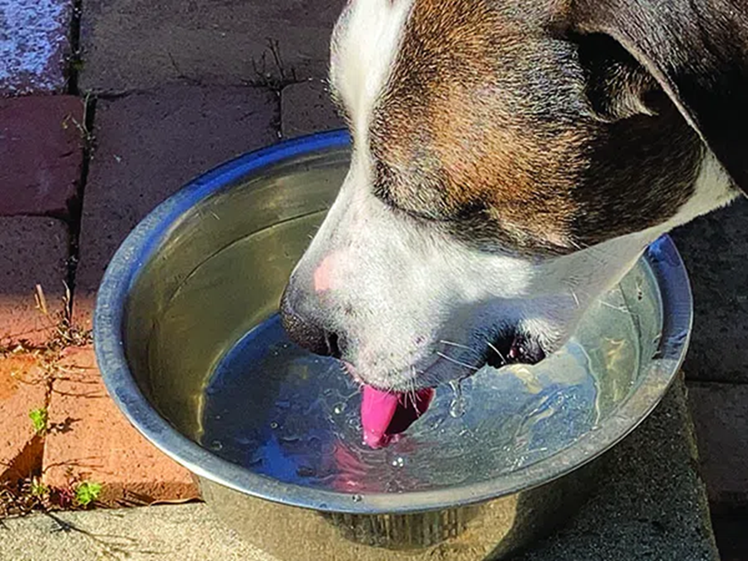By Eileen Fatcheric, DVM. Published: March 22, 2022

Excessive thirst and urination (polyuria/polydipsia or PU/PD in veterinary terms) is a common complaint in dogs. Sometimes the owner doesn’t perceive it as a problem until the dog starts urinating in the house – then it’s a big problem! There are many – at least 25 – possible causes for poluria and polydipsia in dogs. This means your veterinarian needs to systematically rule things out one by one, until finally arriving at a diagnosis. It can be a process, so you’ll need to be patient and work with your veterinarian to get to the answers you need.
CONFIRMING PU/PD IN YOUR DOG
First, your veterinarian will need to confirm that your dog really has PU/PD. How much water dogs need in a day varies a lot, depending on activity level, the moisture level of the dog’s food, exercise, environmental temperature and humidity. However, a good general guideline for normal water consumption is about an ounce of water per pound of body weight per day. So, 10 ounces for a 10-pound dog, 60 ounces for a 60-pound dog, etc.
Polydipsia in dogs is officially defined as drinking more than 100 ml. of water per kg of the dog’s body weight per day. Veterinarians use milliliters and kilograms (kg) rather than ounces and pounds, but when you convert these values to those more familiar to dog owners, it works out to about 15 ounces for a 10-pound dog and 91 ounces for a 60-pound dog, etc.
Water intake is easy to measure if you have just one dog and you close the toilet lids, but not so easy with multiple pets in the house.
Another way to confirm true PU/PD is to collect a specimen of the very first urine your dog produces in the morning, before he starts drinking for the day, and bring it to your vet in order to run a test (called a urine specific gravity, USG) on this sample.
USG is a measure of the concentration of the urine. If your dog truly has PU/PD, the urine will be dilute. Your veterinarian may want you to drop off samples for this test for three or four days in a row for confirmation.
Next, your vet needs to make sure the PU/PD you’re observing isn’t simply a side effect of a medication your dog may be on. Phenobarbital, oral steroids like prednisone, diuretics like furosemide (Lasix), potassium bromide, and thyroid medication are all drugs that can cause excessive thirst and urination as a side effect. Topical steroids can do it, too, so eye drops, ear drops, and skin creams with cortisone may be the culprit. If you’re using cortisone cream on your own skin, don’t let your dog lick you!
More info at: https://www.whole-dog-journal.com/health/what-causes-excessive-thirst-and-urination-in-dogs/
